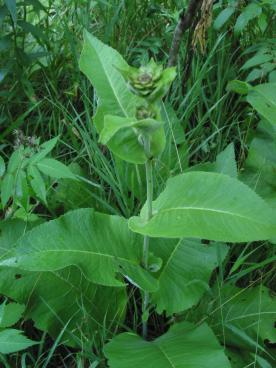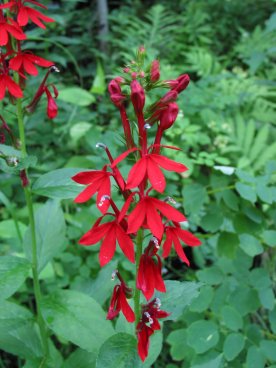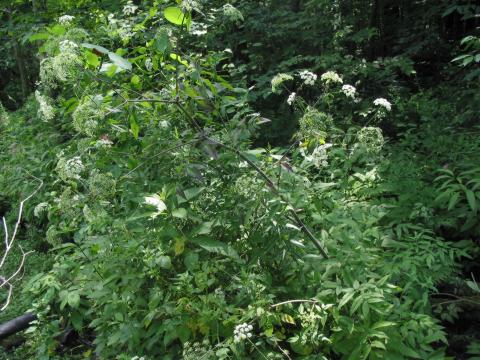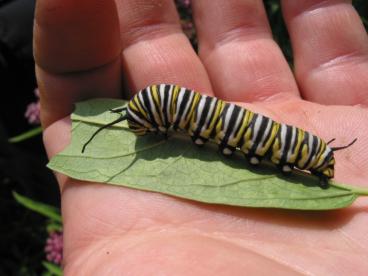|
July 28, 2002
Plants
(Photos and report by Walter
Muma) |
|
|
|
Four people met in the morning amidst doubtful weather Sunday morning at
10:00am. Major thunderstorms had passed through the area overnight, and
the last one departed east from our walk area just minutes before we were
scheduled to start. Unfortunately, the doubtful weather caused some other
people to cancel, including two who were going to share their extensive
plant knowledge with us.
However, we carried on nevertheless. It was a hot and humid,
though clear, day.
|
|
|

|
Early in our trek we came
upon our first major mystery plant. Walter was resolute in his claim
that it was prairie dock. But alas, it was not to be! Research the
next day and consultation with a native plant specialist (Tim
Martens) identified it as Elecampane. |
|
|
|
|

|
We traveled alongside a woodland wetland clearing for a
while. |
|
|
|
|
 |
Here we found hundreds of cardinal flowers, in full
bloom! |
|
|
|
|
Forging our way gently across a dry marsh, rich in plants to
examine and identify.
|
|
|
|
|
|
Here is a montage of some of the many plants we encountered
(L-R, top to bottom): blue vervain, helleborine orchid, a mallow, maidenhair
fern, trillium in seed, bulb-bearing water hemlock, wood nettle,
yellow goatsbeard, and swamp milkweed.
|
|

|
|
|
 |
We found many water hemlock plants. Water hemlock is
probably the most poisonous plant in North America - one mouthful
can easily kill a person. This is a photo of a
particularly large one - about 6 feet tall. For more
information about Water Hemlock, please visit the
Wildwood Survival website -
Poisonous Plants section. |
|
|
|
|
 |
A Monarch butterfly caterpillar feeding on milkweed. We
tried to carefully replace it where we found it. |
|
|
|
|
Later we stopped for a break and wrote down everything of what
we had seen that we could eat during our walk. We also included various
animals that we could see signs of, even if we hadn't actually seen them.
An excellent day was had by all who participated, and we
learned a lot. Thanks to everyone who came out!
|
|
|
| |